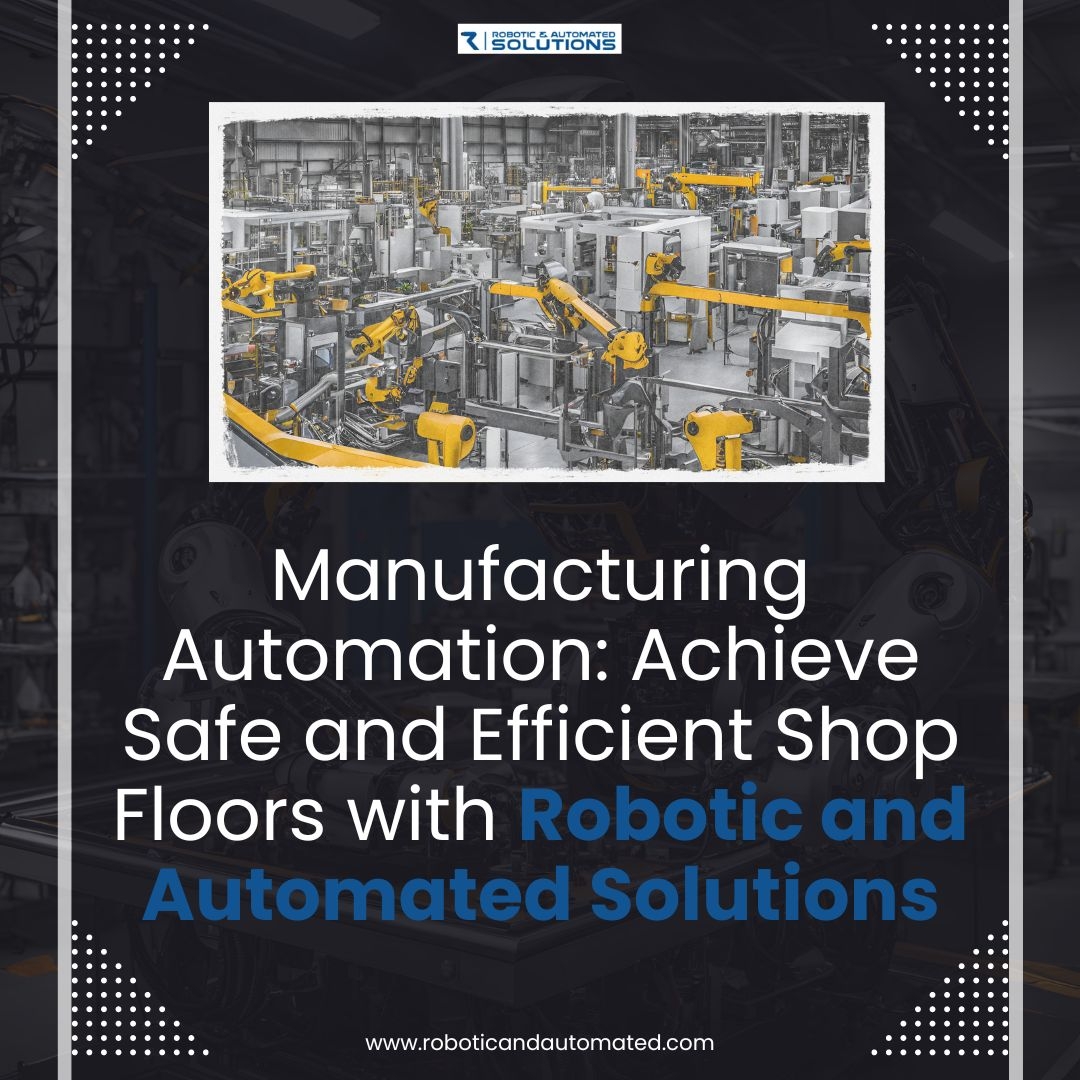Manufacturing Automation: Elevating Safety and Efficiency in Modern Production

The manufacturing landscape has undergone a significant transformation with the integration of advanced technologies, prominently featuring manufacturing automation. This pivotal advancement is instrumental in bolstering efficiency, safety, and productivity within manufacturing environments. For manufacturers transitioning to these cutting-edge technologies, expertise in the design and implementation of robotic and automated systems is essential. This article delves into the many advantages of manufacturing automation, emphasizing its role in fostering safer and more efficient shop floors.
The Progression of Manufacturing Automation
Manufacturing automation encompasses the use of control systems—such as computers, robots, and information technologies—to oversee various processes and machinery, thereby diminishing the need for manual intervention. The evolution of automation began with rudimentary mechanical tools and has advanced to today’s sophisticated robotic systems and intelligent software solutions. This evolution has been propelled by the demand for heightened productivity, improved quality, and greater safety within manufacturing environments.
The Influence of Robotics and Intelligent Systems
The advent of robotics has revolutionized the manufacturing sector. Modern robots are designed to execute repetitive tasks with remarkable precision and speed, significantly reducing human error. Today’s manufacturing robots are equipped with advanced sensors and artificial intelligence (AI), enabling them to adapt to a wide range of tasks and conditions. These intelligent systems analyze data, learn from experiences, and make informed decisions, which further refines the manufacturing process.
Enhancing Efficiency Through Automation
Manufacturing efficiency extends beyond mere acceleration; it also involves the optimization of resources, reduction of waste, and cost savings. Manufacturing automation plays a critical role in enhancing these aspects:
Resource Optimization: Automated systems ensure optimal utilization of materials and energy, thereby minimizing waste and maximizing productivity.
Consistent Quality: Automation provides uniform quality by minimizing variability and ensuring each product meets precise specifications.
Cost Savings: Although the initial investment in automation may be substantial, the long-term savings derived from increased productivity, reduced waste, and lower labor costs are considerable.
Advancing Safety Through Automation
Safety is a paramount concern in manufacturing settings, and automation significantly contributes to improved safety on the shop floor:
Reduction of Hazardous Tasks: Robots can perform dangerous tasks, thereby reducing the risk of injury to human workers.
Enhanced Ergonomics: Automated systems handle heavy lifting and repetitive motions, which helps prevent musculoskeletal disorders among workers.
Advanced Monitoring and Control: Sophisticated sensors and monitoring systems detect potential hazards in real-time, allowing for immediate corrective actions.
Designing and Implementing Automated Solutions
The successful deployment of manufacturing automation requires a strategic approach. Expertise in designing and implementing robotic and automated solutions is crucial to fully leverage the benefits of these technologies.
Assessing Needs and Capabilities: The initial step involves evaluating manufacturing needs and capabilities, identifying bottlenecks, assessing available technologies, and conducting a cost-benefit analysis.
Designing the Automated System: This phase includes designing the automated system, integrating various components, customizing solutions to address specific challenges, and ensuring scalability for future needs.
Implementation and Training: This involves installing automated systems, conducting rigorous testing to ensure functionality and safety, and providing comprehensive training for employees to operate and maintain these systems effectively.
The Future of Manufacturing Automation
The future of manufacturing automation is bright, driven by advancements in AI, machine learning, and the Internet of Things (IoT). These technologies are set to further enhance efficiency, safety, and productivity:
AI and Machine Learning: AI and machine learning are revolutionizing automation by enabling systems to learn from data, adapt to new situations, and continuously improve. Applications include predictive maintenance, quality control, and process optimization.
IoT and Smart Manufacturing: IoT connects devices and systems, creating a network of smart manufacturing environments. This connectivity facilitates real-time data collection and analysis, leading to better decision-making and more efficient operations.
Collaborative Robots (Cobots): Cobots are designed to work alongside human operators, blending the strengths of both. Equipped with advanced safety features, cobots operate safely in close proximity to humans, managing repetitive tasks while humans focus on more complex and creative aspects of manufacturing.
Sustainable Manufacturing
Sustainability is increasingly important in manufacturing. Automation significantly contributes to achieving sustainable practices by optimizing energy use, reducing waste, and ensuring efficient resource utilization.
Fostering a Safety Culture in the Age of Automation
Despite technological advancements, maintaining a robust safety culture is crucial. This culture ensures that human aspects of manufacturing are not overlooked and that safety practices evolve alongside technological innovations:
The Human Element: While automation reduces the need for human intervention in hazardous tasks, workers are still essential for operating, monitoring, and maintaining these systems. A safety culture prioritizes human well-being and fosters a proactive approach to safety.
Training and Awareness: Comprehensive training on operational procedures and safety protocols specific to new technologies is essential. Regular sessions help employees understand risks and adhere to safety guidelines.
Communication and Reporting: Encouraging open communication and reporting of safety concerns is vital, as minor issues with automated systems can escalate into significant hazards.
Safety Protocols: Clear safety protocols tailored to automated systems are crucial. These include regular maintenance, emergency procedures, and safety checks to minimize risks.
Leadership Commitment: Strong leadership commitment to safety is essential. When management prioritizes safety and allocates resources accordingly, it sets a precedent for the entire organization.
Conclusion
Manufacturing automation stands as a transformative force in the industrial sector, driving enhanced efficiency, safety, and productivity on the shop floor. Expertise in the design and implementation of robotic and automated solutions is key to leveraging these technologies effectively. As automation technologies continue to advance, the potential for further improvements in manufacturing efficiency and safety is vast. Embracing manufacturing automation not only enhances current operations but also positions manufacturers for future success in an increasingly competitive and technologically advanced industry.
- Industry
- Art
- Causes
- Crafts
- Dance
- Drinks
- Film
- Fitness
- Food
- Oyunlar
- Gardening
- Health
- Home
- Literature
- Music
- Networking
- Other
- Party
- Religion
- Shopping
- Sports
- Theater
- Wellness
- News


